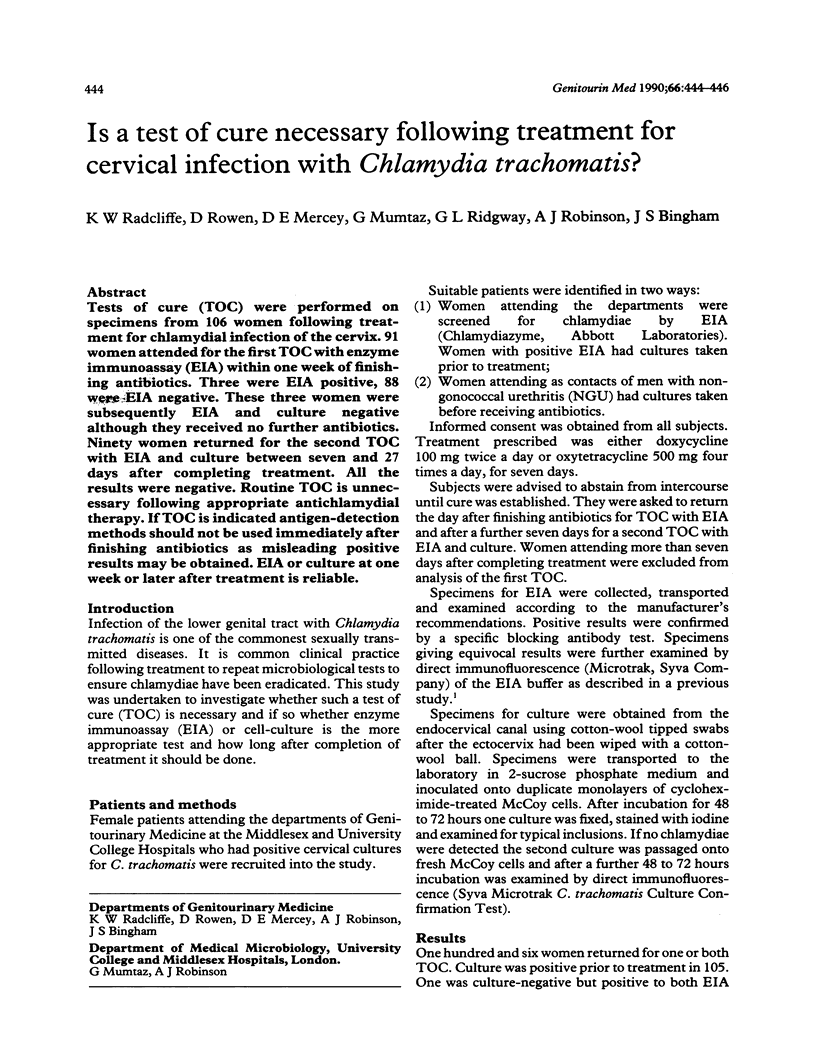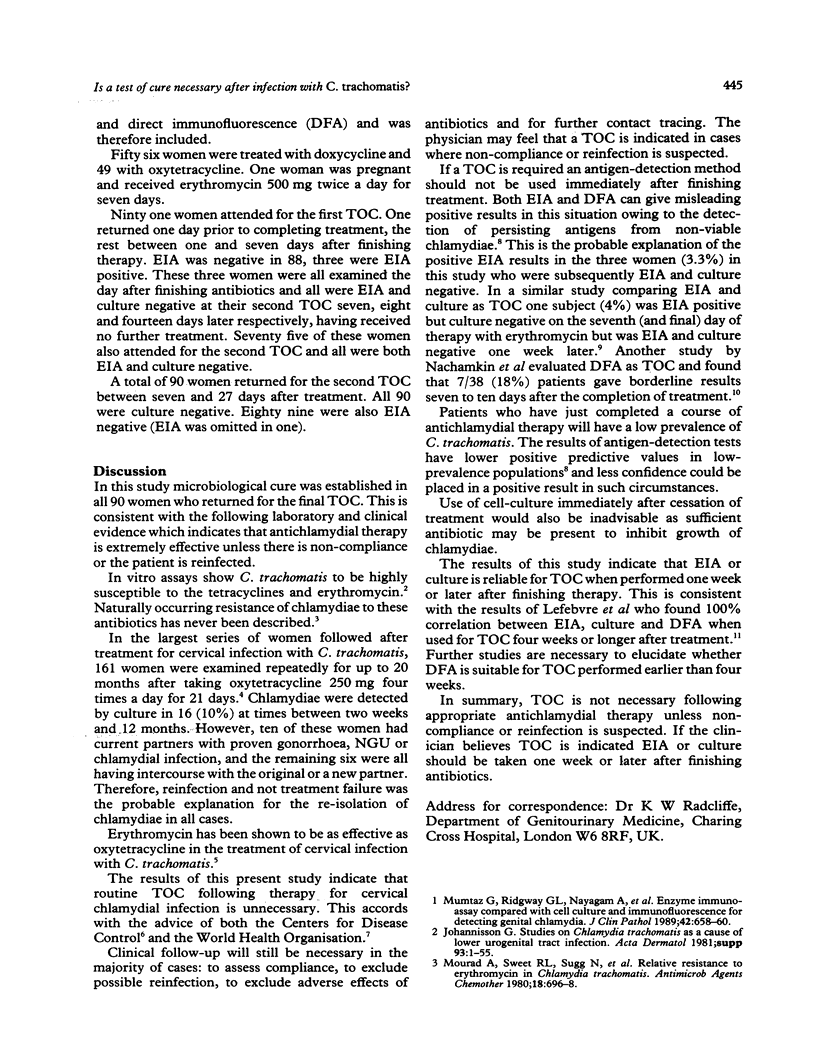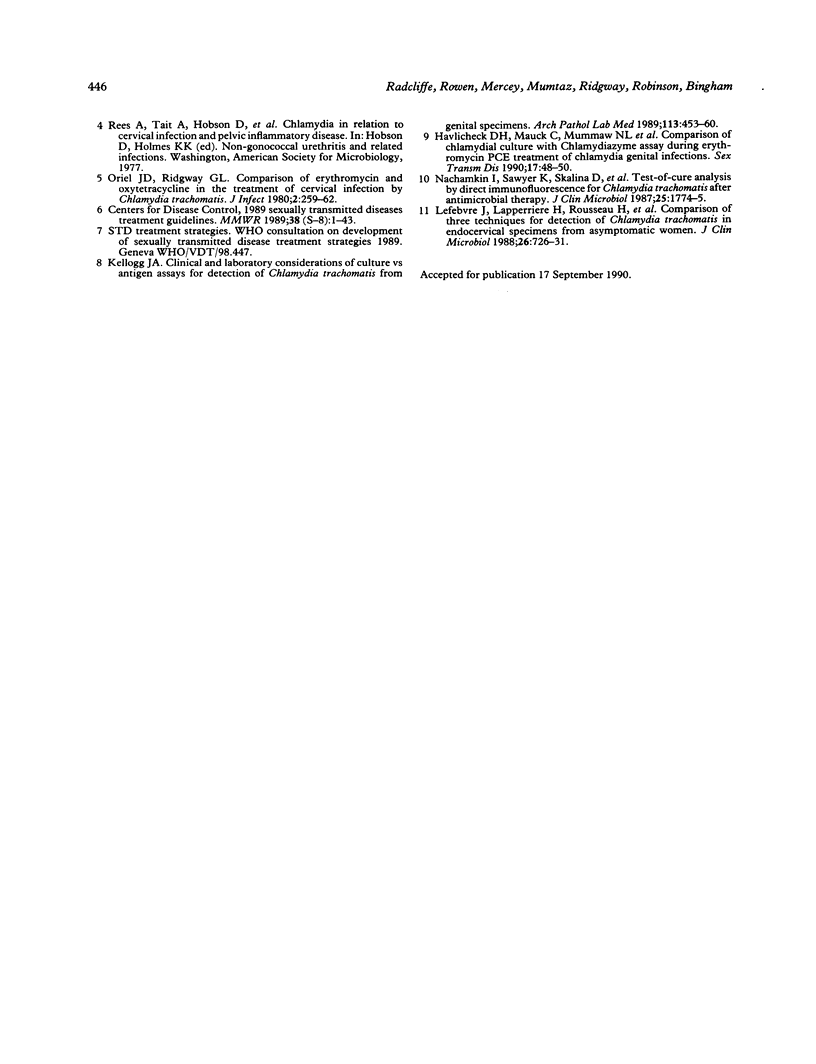Abstract
Tests of cure (TOC) were performed on specimens from 106 women following treatment for chlamydial infection of the cervix. 91 women attended for the first TOC with enzyme immunoassay (EIA) within one week of finishing antibiotics. Three were EIA positive, 88 were EIA negative. These three women were subsequently EIA and culture negative although they received no further antibiotics. Ninety women returned for the second TOC with EIA and culture between seven and 27 days after completing treatment. All the results were negative. Routine TOC is unnecessary following appropriate antichlamydial therapy. If TOC is indicated antigen-detection methods should not be used immediately after finishing antibiotics as misleading positive results may be obtained. EIA or culture at one week or later after treatment is reliable.
Full text
PDF


Selected References
These references are in PubMed. This may not be the complete list of references from this article.
- Havlichek D. H., Jr, Mauck C., Mummaw N. L., Moorer G., Rajan S. J., Mushahwar I. K. Comparison of chlamydial culture with Chlamydiazyme assay during erythromycin PCE treatment of Chlamydia genital infections. Sex Transm Dis. 1990 Jan-Mar;17(1):48–50. [PubMed] [Google Scholar]
- Johannisson G. Studies on Chlamydia trachomatis as a cause of lower urogenital tract infection. Acta Derm Venereol Suppl (Stockh) 1981;93:1–55. [PubMed] [Google Scholar]
- Kellogg J. A. Clinical and laboratory considerations of culture vs antigen assays for detection of Chlamydia trachomatis from genital specimens. Arch Pathol Lab Med. 1989 May;113(5):453–460. [PubMed] [Google Scholar]
- Lefebvre J., Laperrière H., Rousseau H., Massé R. Comparison of three techniques for detection of Chlamydia trachomatis in endocervical specimens from asymptomatic women. J Clin Microbiol. 1988 Apr;26(4):726–731. doi: 10.1128/jcm.26.4.726-731.1988. [DOI] [PMC free article] [PubMed] [Google Scholar]
- Mourad A., Sweet R. L., Sugg N., Schachter J. Relative resistance to erythromycin in Chlamydia trachomatis. Antimicrob Agents Chemother. 1980 Nov;18(5):696–698. doi: 10.1128/aac.18.5.696. [DOI] [PMC free article] [PubMed] [Google Scholar]
- Mumtaz G., Ridgway G. L., Nayagam A., Oriel J. D. Enzyme immunoassay compared with cell culture and immunofluorescence for detecting genital chlamydia. J Clin Pathol. 1989 Jun;42(6):658–660. doi: 10.1136/jcp.42.6.658. [DOI] [PMC free article] [PubMed] [Google Scholar]
- Oriel J. D., Ridgway G. L. Comparison of erythromycin and oxytetracycline in the treatment of cervical infection by Chlamydia trachomatis. J Infect. 1980 Sep;2(3):259–262. doi: 10.1016/s0163-4453(80)90722-7. [DOI] [PubMed] [Google Scholar]


